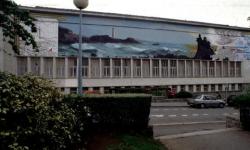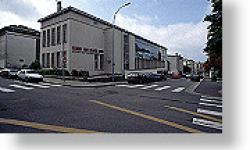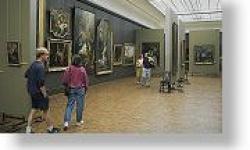Musée des Beaux-Arts, Brest,Bretagne,France
Like Brest itself, this Museum and its paintings were destroyed by the bombings during WWII in 1941. Rebuilt in 1964, this building has become a cornerstone of the new city. The Museums collection contains European paintings from the 16th century onwards including many works from the regional Pont-Aven Post Impressionist School. The main attraction is its symbolist exhibition, considered one of the best in Europe.
Musée des Beaux-Arts is like an anchor in the new city: a place to find, through artistic expression, a memory erased elsewhere. European paintings from the late sixteenth century to the present is on show.
Nearly thirty years later, some three hundred works on display invite tourists to approach the sensitive world of art and to discover the distant past.
Three main sets punctuate the presentation. First exhibition include a vast recreation of post-war period (sixteenth to seventeenth century) showing both reports followed between Italy and France, not forgetting the Flemish and Dutch, the variety of schools and opposition between the Classical and Baroque.
The evocation of the great genre, the spread of Neoclassicism and Romanticism protracted birth of the visit. Some names attract attention: Guercino and Schalcken, Dolci, Houasse, Giordano, Van Loo, Batoni or Sablet. We can not ignore the morbid and fascinating web of Pietro della Vecchia, where we discover Isabelle of Portugal in her open casket.
Then, on the ground floor, a series of insights into the many currents of the nineteenth century, since Romanticism (with A. or E. Cibot Decamps), the Academy (A. Delobbe), landscape (G. Michel) and the portrait (F. Winterhalter), mural art (H. Levy, JP Laurens) to Orientalism (E. Fromentin) and Realism (P. Mathey and R. Collins). We will pass the famous trompe-l'oeil, "the Cow Barn" painted by G. Kneipp in 1841: A masterpiece of kitsch, surreal premonition of daring.
Finally - and this is the highlight of the Museum - the symbolist movement, decisive in the evolution of art at the end of the last century. We collected not only pastels L. Lévy-Dhurmer and E .- R. Ménard, E canvases. Aman-Jean, G. Clairin, C. Dulac, A. Séon, H. Martin ... but the few Belgian and English works. In the middle, the Pont-Aven (1886-1895): E. Bernard, H. Delavallée, E. Jourdan, M. Maufras, H. Moret, A. Seguin. If shortages are rare, P. Gauguin is still lacking. The Nabis received their inheritance innovative: these are P. Serusier, H.-G. Ibele, G. Lacombe, until the canvas most of P. Bonnard: "The apple tree in bloom" (1920).



Musée des Beaux-Arts reviews
Login to comment